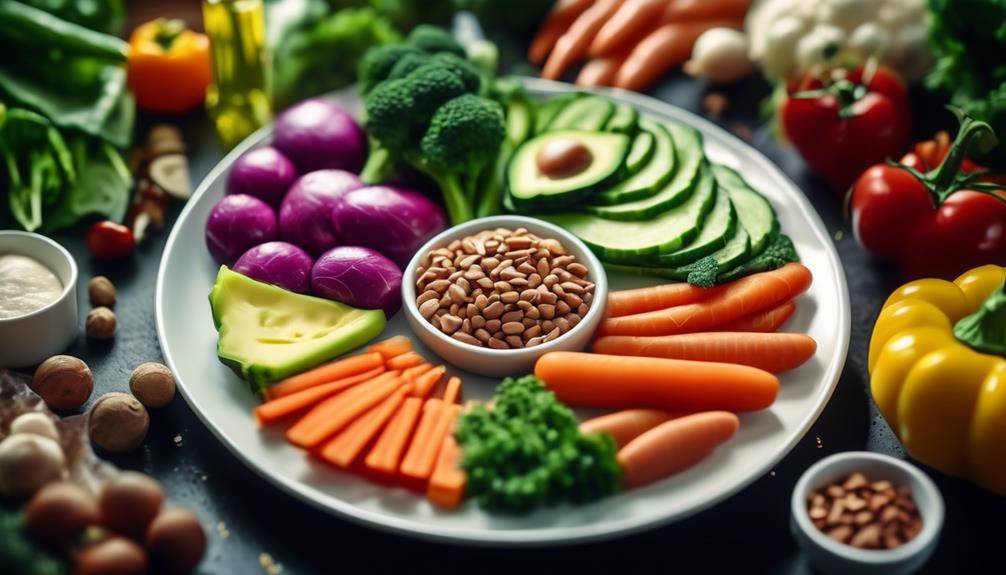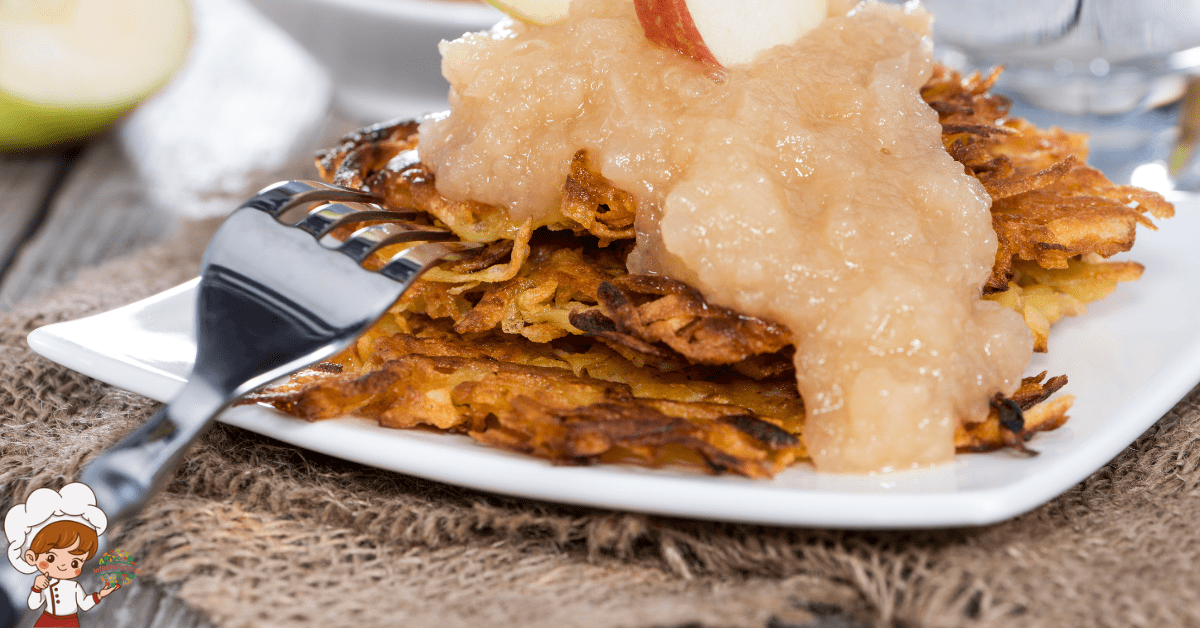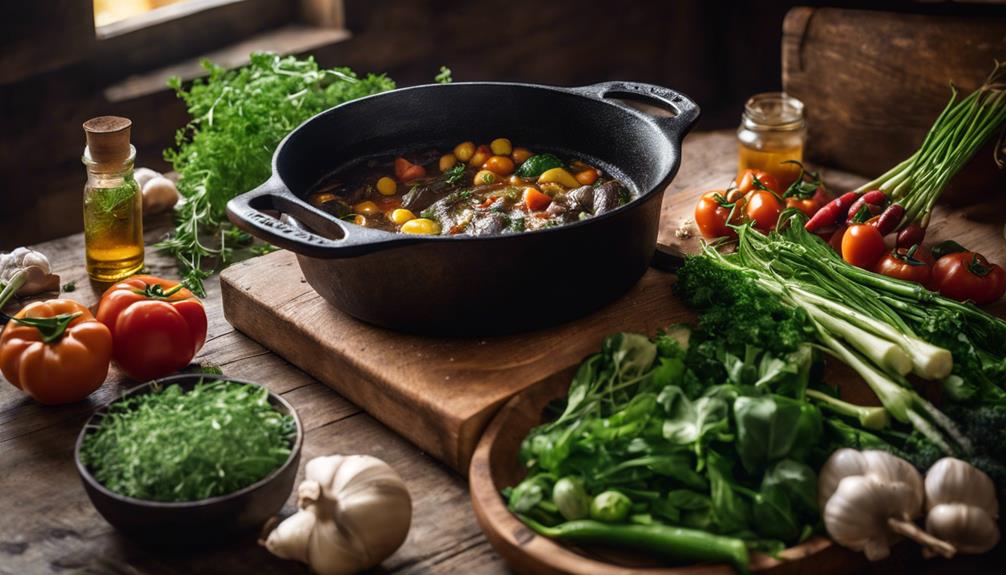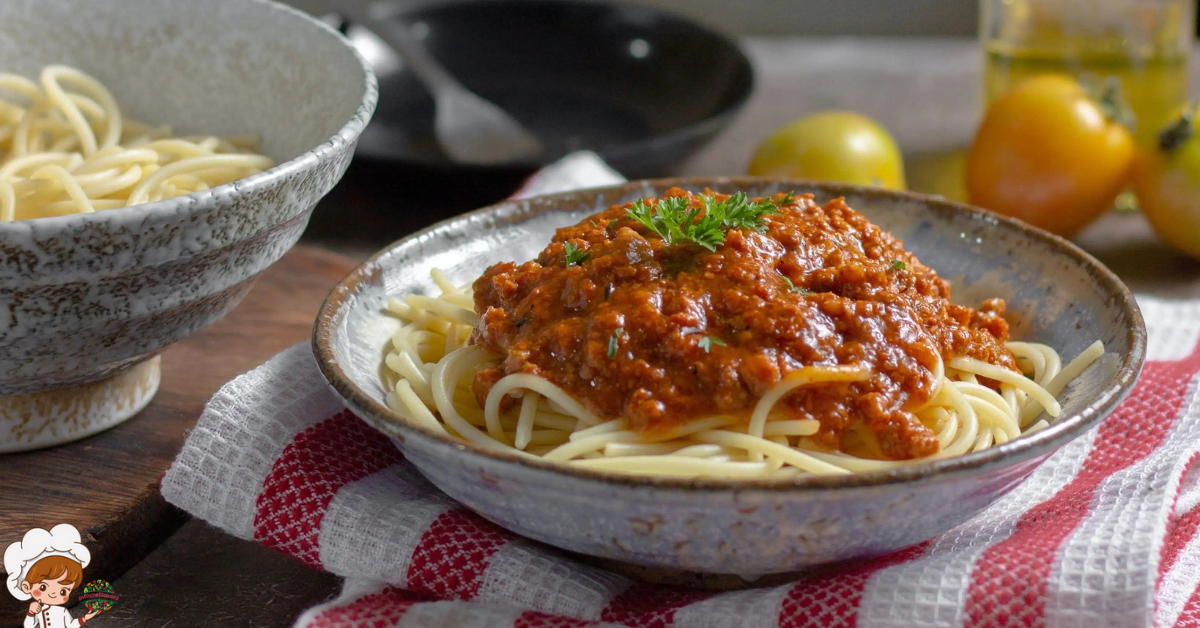The Best Peruvian Spicy Food Dishes
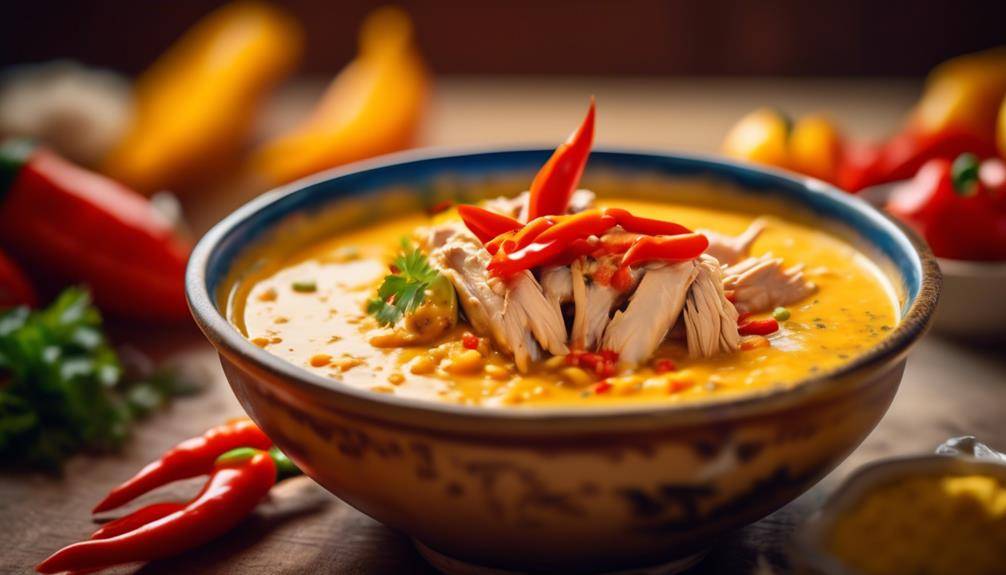
If you’re someone who appreciates a little kick in your meals, then you’ll certainly find The Best Peruvian Spicy Food Dishes to be quite intriguing. The vibrant and fiery flavors that Peruvian cuisine offers are not for the faint of heart, but they are undoubtedly worth exploring. From the mouthwatering Rocoto Relleno to the tantalizing Aji De Gallina, the Peruvian culinary scene is a treasure trove of spicy delights. But what makes these dishes so special? What sets them apart from other spicy cuisines? Well, dear reader, get ready to embark on a flavorful journey as we uncover the secrets behind these Peruvian spicy food dishes.
Rocoto Relleno
Rocoto Relleno is a fiery Peruvian dish that will leave your taste buds tingling with its vibrant flavors and spicy kick. This traditional preparation showcases the rocoto pepper, a unique ingredient that is native to Peru. The rocoto pepper is known for its intense heat and distinct flavor, making it the star of this dish.
To prepare Rocoto Relleno, the rocoto peppers are first boiled to reduce their spiciness while still maintaining their distinctive taste. The peppers are then carefully deseeded and stuffed with a filling made from ground beef or pork, onions, garlic, and a variety of spices. The filling is often mixed with raisins, olives, and hard-boiled eggs for added texture and flavor.
One of the fascinating aspects of Rocoto Relleno is the variations that exist across different regions of Peru. Each region puts its own spin on the dish, incorporating local ingredients and flavors. For example, in the coastal regions, seafood such as shrimp or crab may be added to the filling, providing a delightful contrast to the spiciness of the pepper.
Once the peppers are stuffed, they are topped with a generous amount of cheese and baked until the cheese turns golden and bubbly. The result is a mouthwatering dish that combines the heat of the rocoto pepper with the richness of the filling and the creaminess of the cheese.
Rocoto Relleno is often served with a side of rice and a fresh salad, providing a balanced and satisfying meal. Its spicy and robust flavors make it a favorite among spice enthusiasts and those who enjoy exploring the diverse culinary offerings of Peru. So, if you’re up for a culinary adventure, give Rocoto Relleno a try and experience the fiery and tantalizing flavors of this traditional Peruvian dish.
Aji De Gallina
Aji De Gallina is a delectable Peruvian dish that combines tender chicken in a creamy and spicy yellow pepper sauce, resulting in a harmonious blend of flavors. This traditional dish is a true representation of Peruvian cuisine and has a rich history and cultural significance. The cooking methods used to prepare Aji De Gallina involve carefully simmering the chicken until it becomes tender and then shredding it into small pieces. The sauce, which is the heart of the dish, is made by blending yellow aji peppers, onions, garlic, bread, and walnuts until it forms a smooth and creamy consistency. The sauce is then combined with the shredded chicken and served over a bed of rice.
The historical origins of Aji De Gallina date back to the colonial era in Peru. It is believed that the dish was created by African slaves who worked in the haciendas and used readily available ingredients to create a flavorful and satisfying meal. The yellow aji peppers used in the sauce were introduced to Peru by the Spanish during the colonization period. Over time, the dish has evolved and become a beloved staple in Peruvian cuisine, with each region adding its own unique twist.
Today, Aji De Gallina is a popular dish served in homes and restaurants throughout Peru. It is often enjoyed during special occasions and celebrations, as well as on a regular basis. The creamy and spicy sauce paired with the tender chicken creates a taste sensation that is both comforting and satisfying. Whether you are a fan of spicy food or simply enjoy exploring new flavors, Aji De Gallina is a must-try dish that will transport you to the vibrant and diverse culinary world of Peru.
Lomo Saltado
As we move on to the next delicious Peruvian dish, let’s shift our focus to the tantalizing flavors of Lomo Saltado. Lomo Saltado is a popular and beloved dish in Peru, known for its unique blend of Peruvian and Chinese cuisine. This fusion dish showcases the rich cultural heritage of Peru, combining traditional ingredients and cooking methods with those brought over by Chinese immigrants.
The cooking method for Lomo Saltado involves stir-frying strips of beef with onions, tomatoes, and aji amarillo, a Peruvian yellow chili pepper that adds a delightful kick of spice. The dish is then served on a bed of white rice, and often accompanied by French fries. The combination of tender beef, vibrant vegetables, and crispy fries creates a harmonious balance of flavors and textures.
Lomo Saltado holds great cultural significance in Peru, as it represents the blending of different culinary traditions. The influence of Chinese immigrants in Peru can be seen in various aspects of Peruvian cuisine, and Lomo Saltado is a prime example of this cultural exchange. The dish not only celebrates the diversity of flavors, but also reflects the country’s history and immigration patterns.
Furthermore, Lomo Saltado embodies the Peruvian spirit of improvisation and resourcefulness. The dish was born out of necessity, as Chinese immigrants in Peru used local ingredients to recreate familiar flavors from their homeland. This adaptability and creativity in the kitchen is a testament to the resilience and ingenuity of Peruvian culture.
Anticuchos
With its bold flavors and cultural significance, Anticuchos is a must-try Peruvian dish that showcases the country’s culinary heritage. Derived from the Quechua word “anti” meaning Andes and “kuchu” meaning cut, Anticuchos are skewers of marinated and grilled meat that have been enjoyed in Peru for centuries. Here are three reasons why Anticuchos should be on your culinary bucket list:
- Cooking methods: Anticuchos are traditionally made with beef heart, though other meats like chicken, pork, or seafood can also be used. The meat is marinated in a flavorful mixture of spices, vinegar, and aji panca, a type of Peruvian chili pepper, to tenderize and infuse it with a smoky, spicy kick. After marinating, the meat is threaded onto skewers and grilled over an open flame or hot coals. This cooking method imparts a charred and slightly crispy exterior while keeping the meat juicy and tender on the inside.
- Cultural significance: Anticuchos have deep cultural roots in Peru and hold a special place in the culinary traditions of the country. Originating from the pre-Columbian era, Anticuchos were initially made using llama meat and were offered as a sacrifice to the gods during religious ceremonies. Over time, the dish evolved and became popular among the general population, becoming a staple street food. Today, Anticuchos are not only enjoyed by Peruvians, but also by visitors who are eager to experience the rich flavors and cultural heritage of the country.
- Flavor explosion: Anticuchos are bursting with bold and complex flavors. The marinade, with its combination of spices, vinegar, and aji panca, infuses the meat with a smoky, tangy, and slightly spicy taste. The grilling process adds a charred and smoky aroma that further enhances the overall flavor profile. The meat itself, whether it’s beef heart or another protein, is tender and succulent, making each bite a delightful explosion of flavors and textures.
Ceviche Mixto
When it comes to Peruvian ceviche, the flavors and ingredients are a reflection of tradition and authenticity. Ceviche Mixto, in particular, combines a variety of seafood such as fish, shrimp, and squid, marinated in tangy lime juice and spiced with rocoto peppers for a kick of heat. This dish showcases the diverse flavors and regional specialties found in Peruvian cuisine, making it a must-try for any food enthusiast.
Traditional Flavors and Ingredients
The tantalizing flavors and vibrant ingredients found in Ceviche Mixto embody the essence of traditional Peruvian cuisine. This iconic dish showcases the cultural significance of traditional flavors and ingredients in Peruvian spicy food dishes. Here are three variations of Ceviche Mixto that highlight the rich diversity of Peruvian culinary traditions:
- Classic Ceviche Mixto: Made with fresh fish, shrimp, octopus, and scallops marinated in a tangy blend of lime juice, cilantro, and rocoto peppers. The combination of seafood and citrus creates a refreshing and zesty flavor that is synonymous with Peruvian cuisine.
- Nikkei Ceviche Mixto: Influenced by Japanese immigrants, this variation incorporates ingredients like soy sauce, ginger, and sesame oil. The fusion of Peruvian and Japanese flavors creates a unique and harmonious taste experience.
- Amazonian Ceviche Mixto: Reflecting the culinary traditions of the Amazon rainforest, this version features exotic ingredients like palm hearts, plantains, and ají charapita peppers. The vibrant flavors and textures of the Amazon come to life in this aromatic and spicy dish.
Each variation of Ceviche Mixto showcases the diversity and depth of traditional Peruvian flavors and ingredients, making it a must-try for any food enthusiast.
Variations and Regional Specialties
To fully appreciate the variety of flavors and regional specialties of Ceviche Mixto, one must delve into the diverse culinary traditions found throughout Peru. This popular Peruvian dish, known for its fresh seafood marinated in citrus juices, takes on different flavors and presentations depending on the region. Regional spice blends play a crucial role in adding unique and distinctive tastes to Ceviche Mixto.
Coastal regions, such as Lima and Trujillo, often incorporate aji amarillo, a yellow chili pepper, into their marinades, giving the dish a vibrant and spicy kick. In the Andean highlands, Ceviche Mixto is influenced by traditional Andean ingredients like rocoto, a red chili pepper, and huacatay, a Peruvian herb. These cultural influences result in a wide array of Ceviche Mixto variations that showcase the rich culinary heritage of Peru.
Papa a La Huancaina
Papa a La Huancaina is a tantalizing Peruvian dish that combines creamy, spicy sauce with perfectly boiled potatoes, creating a harmonious blend of flavors that will leave your taste buds craving for more. This traditional Peruvian dish showcases the rich culinary heritage of the country and is a popular choice among locals and tourists alike.
When it comes to cooking methods, Papa a La Huancaina is relatively simple to prepare. The star of the dish is the Huancaina sauce, made from a base of queso fresco, a fresh white cheese, blended with yellow aji amarillo peppers, garlic, and evaporated milk. The sauce is then poured generously over boiled potatoes, adding a creamy and spicy kick to the dish. The potatoes are typically boiled until they are tender yet firm, ensuring a satisfying texture that complements the sauce perfectly.
To enhance the flavors of Papa a La Huancaina, traditional accompaniments are often served alongside the dish. One popular choice is a garnish of black olives, adding a briny and salty touch to the creamy potatoes. Hard-boiled eggs are another common addition, providing a contrasting texture and a subtle richness. Additionally, fresh lettuce leaves are often included, adding a refreshing element to balance out the spiciness of the sauce.
Pollo a La Brasa
‘Pollo a La Brasa’ is a succulent Peruvian dish that showcases perfectly grilled chicken with a flavorful marinade that will leave you craving for more. This popular dish, also known as Peruvian roast chicken, is a testament to the country’s rich culinary heritage. The secret to its deliciousness lies in the unique grilling techniques and traditional marinades used.
To achieve the perfect Pollo a La Brasa, Peruvian chefs use a combination of grilling techniques that impart a smoky flavor and ensure the chicken is cooked to perfection. The chicken is typically marinated for several hours, allowing the flavors to penetrate deep into the meat. The traditional marinades often consist of a blend of spices, including cumin, paprika, garlic, and aji panca, a Peruvian chili pepper that adds a mild heat. These marinades not only enhance the taste of the chicken but also tenderize it, resulting in a juicy and succulent bite.
The chicken is then grilled over charcoal, which adds a distinct smokiness to the dish. The grilling process requires skill and precision, as the chicken needs to be turned and basted regularly to ensure even cooking and to prevent it from drying out. The result is a beautifully browned and crispy skin that encases the moist and flavorful meat.
Pollo a La Brasa is often served with a side of fries and a creamy dipping sauce called aji verde. The combination of the perfectly grilled chicken, the aromatic marinade, and the smoky flavors from the grill make this dish a true delight for the senses. Whether enjoyed as a family meal or at a traditional Peruvian restaurant, Pollo a La Brasa is a must-try dish that will transport you to the vibrant streets of Peru.
Seco De Cordero
When it comes to cooking techniques for Seco De Cordero, there are a few key points to keep in mind. This traditional Peruvian dish is typically made by slow-cooking lamb with a flavorful blend of spices and herbs. The slow cooking process allows the flavors to meld together and the meat to become tender and juicy. Additionally, there are popular regional variations of Seco De Cordero, with each region putting their own unique twist on the dish.
Cooking Techniques for Seco De Cordero
To achieve the perfect seco de cordero, employ a variety of cooking techniques that enhance the flavors and tenderize the lamb. Here are three essential techniques that will elevate your seco de cordero to new heights:
- Searing: Start by searing the lamb in a hot pan to lock in the juices and create a flavorful crust. This step adds depth and richness to the dish.
- Slow braising: After searing, transfer the lamb to a pot and slowly braise it in a mixture of spices, herbs, and broth. This technique allows the flavors to meld together while tenderizing the meat.
- Reduction: Once the lamb is tender, remove it from the pot and continue cooking the sauce until it thickens and intensifies in flavor. This reduction process concentrates the flavors, creating a robust and savory sauce.
Popular Regional Variations
There are several popular regional variations of seco de cordero, each offering its own unique twist on this flavorful Peruvian dish. In the northern coastal regions of Peru, seco de cordero is prepared with a generous amount of cilantro, resulting in a vibrant green sauce that is both tangy and aromatic. In the highlands of the Andes, the dish takes on a heartier character, with the addition of potatoes and a variety of native herbs and spices.
In the Amazon rainforest, seco de cordero is prepared using exotic jungle ingredients such as wild mushrooms and plantains, giving it a rich and earthy flavor profile. Despite these regional variations, the dish always maintains its traditional flavors and ingredients, including tender lamb, garlic, cumin, and a touch of chili pepper. Whether you prefer the coastal freshness, the mountainous warmth, or the jungle’s wildness, seco de cordero is a dish that showcases the diverse culinary heritage of Peru.
Ají De Pollo
Ají De Pollo, a popular Peruvian dish, is a flavorful and spicy chicken stew that will tantalize your taste buds. This delicious dish is known for its unique combination of ingredients and cooking methods, resulting in a dish that is both comforting and fiery. Here are three key aspects of Ají De Pollo that make it a standout dish:
- Cooking Methods: Ají De Pollo is traditionally made by simmering chicken in a rich and spicy sauce. The chicken is first boiled until tender, then shredded and cooked in a sauce made from ají amarillo peppers, onions, garlic, and a variety of Peruvian spices. This slow cooking process allows the flavors to meld together, creating a dish that is rich, flavorful, and satisfying.
- Spice Level: Ají De Pollo is known for its bold and vibrant spice level. The ají amarillo peppers used in the sauce provide a fiery kick, while other spices like cumin and oregano add depth and complexity to the dish. The spice level can be adjusted to suit individual preferences, but the traditional version of Ají De Pollo packs a punch that will leave you craving more.
- Flavor Profile: The combination of spicy ají amarillo peppers, fragrant spices, and succulent chicken creates a flavor profile that is truly exceptional. The dish is both savory and slightly sweet, with hints of citrus and earthy undertones. The flavors are well-balanced and harmonious, making each bite a burst of deliciousness.
Causa Limeña
Now let’s explore another mouthwatering Peruvian dish that will captivate your taste buds: Causa Limeña. This traditional dish is a true delight for those who appreciate a harmonious blend of flavors and textures. Causa Limeña is a cold potato dish that originated in Lima, the capital city of Peru, and is known for its unique cooking techniques and rich history.
The history of Causa Limeña dates back to the late 19th century when it was first introduced by African slaves who worked in Lima’s households. Over time, the dish evolved and incorporated influences from Spanish and indigenous Peruvian cuisines, resulting in the distinctive flavors we enjoy today. Causa Limeña is a testament to the cultural fusion that defines Peruvian cuisine.
The cooking techniques used to prepare Causa Limeña are simple yet effective. The dish consists of layers of mashed potatoes, flavored with lime juice and aji amarillo, a Peruvian yellow chili pepper. The mashed potatoes are then filled with various fillings, such as shredded chicken, tuna, or avocado, and garnished with olives, hard-boiled eggs, and parsley. The combination of flavors and textures creates a truly delightful experience for the palate.
Causa Limeña is not only a delicious dish but also a visually stunning one. The vibrant colors of the layers and the carefully arranged toppings make it a feast for the eyes as well. Whether enjoyed as an appetizer or a main course, Causa Limeña is sure to leave a lasting impression on anyone fortunate enough to taste it.
Chupe De Camarones
If you’re a seafood lover, you’ll be delighted by the traditional shrimp soup known as Chupe De Camarones. This Peruvian dish is packed with spicy flavors that will tantalize your taste buds. The combination of fresh shrimp and aromatic spices creates a rich and flavorful broth that is perfect for warming up on a chilly day.
Traditional Shrimp Soup
To experience the rich flavors of Peruvian cuisine, one must not overlook the delightful traditional shrimp soup known as Chupe De Camarones. This popular dish is a testament to the country’s culinary expertise and love for seafood. Here are some key points to consider when exploring this delectable soup:
- Cooking techniques for shrimp soup:
- Shrimp is typically sautéed with onions, garlic, and spices to enhance its flavor.
- The soup is then simmered with a variety of vegetables such as potatoes, corn, and peas, creating a hearty and filling dish.
- A final touch of cream or milk is added to give the soup a velvety texture.
- Regional variations of shrimp soup:
- Along the coastal regions, the soup is often prepared with local seafood, including fish and shellfish, adding a unique twist to the traditional recipe.
- In the highlands, the soup may incorporate native ingredients like quinoa or Andean potatoes, reflecting the regional agricultural traditions.
- Each variation showcases the diverse culinary heritage of Peru, offering a taste of different landscapes and cultural influences.
Chupe De Camarones is a must-try for any seafood lover, providing a harmonious blend of flavors that will leave you craving for more.
Spicy Peruvian Flavors
Experience the fiery and tantalizing flavors of Peruvian cuisine with the spicy delight that is Chupe De Camarones, a traditional shrimp soup that will awaken your taste buds. Peruvian cuisine is known for its bold and vibrant flavors, and Chupe De Camarones is no exception. This dish is made with a rich and flavorful broth, filled with succulent shrimp, potatoes, corn, and a variety of spices that give it a spicy kick.
The spice in Chupe De Camarones comes from the use of traditional Peruvian spice blends, such as aji amarillo, which is a yellow chili pepper that adds heat and depth of flavor. Additionally, there are various spicy Peruvian sauce variations that can be added to the soup to enhance the spiciness even further. These sauces, like rocoto and huancaina, are made from different peppers and spices that add an extra layer of complexity to the dish. The combination of these spices and sauces creates a truly unforgettable and mouthwatering experience for anyone who tries Chupe De Camarones. So, if you’re ready to explore the world of spicy Peruvian flavors, this traditional dish is a must-try.
Perfect for Seafood Lovers
Indulge in the exquisite flavors of Chupe De Camarones, a spicy Peruvian shrimp soup that will captivate seafood lovers with its rich and tantalizing blend of spices. This regional seafood specialty is one of Peru’s most popular seafood dishes, known for its bold and vibrant flavors that highlight the freshness of the shrimp. Here’s why Chupe De Camarones is a must-try for seafood enthusiasts:
- Bursting with Flavor: The soup is infused with a medley of spices such as garlic, onion, and aji amarillo, creating a fiery kick that elevates the natural sweetness of the shrimp.
- Hearty and Satisfying: Chupe De Camarones is a filling dish that incorporates other ingredients like potatoes, corn, and peas, making it a complete and satisfying meal.
- Cultural Significance: This traditional Peruvian dish has a rich history and is often enjoyed during special occasions and celebrations, showcasing the country’s love for seafood and culinary heritage.
Immerse yourself in the world of Peruvian seafood with Chupe De Camarones, a delicacy that will leave your taste buds craving for more.
Ocopa Arequipeña
Ocopa Arequipeña, a traditional Peruvian spicy dish, combines bold flavors with a creamy texture to create a truly delectable culinary experience. This dish is rooted in the cooking methods and cultural significance of the Arequipa region in Peru.
To prepare Ocopa Arequipeña, a blend of aromatic and spicy ingredients is used. The star of the dish is the rocoto pepper, a fiery chili that adds a distinctive heat. Other key ingredients include huacatay, a Peruvian herb with a unique flavor profile, and peanuts, which lend a creamy texture to the dish. These ingredients are ground together to create a vibrant and flavorful sauce.
The cooking method for Ocopa Arequipeña involves blending the ingredients until they form a smooth and creamy sauce. This sauce is then poured over boiled potatoes, which act as a canvas for the bold flavors. The dish is typically garnished with black olives and hard-boiled eggs, adding a touch of richness and contrasting textures.
Ocopa Arequipeña holds cultural significance in Peru, particularly in the Arequipa region. It is often served during festive occasions and celebrations, bringing people together to enjoy its flavorful and spicy profile. The dish represents the rich culinary heritage of the region and showcases the use of local ingredients in traditional Peruvian cuisine.
Cuy Chactado
Continuing our exploration of traditional Peruvian spicy dishes, let’s now turn our attention to the mouthwatering flavors of Cuy Chactado. This iconic dish showcases the unique cooking methods and cultural significance of Peru.
- Cuy Chactado is a dish that features a whole guinea pig flattened and fried to perfection. The cooking method involves marinating the guinea pig with a blend of spices and then pressing it flat before deep-frying it until it becomes crispy and golden brown. The result is a dish with a crunchy exterior and tender meat that is bursting with flavor.
- The cultural significance of Cuy Chactado cannot be overstated. In Peru, guinea pigs, or “cuy” as they are known locally, have been consumed for centuries. They hold a special place in Peruvian culture and are often served during festive occasions and celebrations. Many Peruvians believe that consuming guinea pig brings good luck and prosperity.
- Cuy Chactado is not just a culinary delight; it also represents the rich history and traditions of Peru. The dish has been passed down through generations, with each family adding its own unique twist to the recipe. It serves as a symbol of Peruvian identity and heritage.
Frequently Asked Questions: The Best Peruvian Spicy Food Dishes
What Are the Main Ingredients Used in Rocoto Relleno?
The main ingredients used in rocoto relleno are rocoto peppers, ground beef, onions, garlic, and cheese. The dish is prepared by hollowing out the peppers, stuffing them with the meat mixture, and baking them until cooked through.
How Is Lomo Saltado Traditionally Served?
Lomo saltado, a traditional Peruvian dish, is served hot and sizzling on a cast iron skillet. The tender strips of beef are stir-fried with onions, tomatoes, and spices, then served over a bed of rice and French fries. Popular variations include adding a fried egg on top.
What Is the Significance of Anticuchos in Peruvian Cuisine?
Anticuchos hold great significance in Peruvian cuisine. They are not just a dish, but a cultural symbol that represents the rich history and culinary traditions of Peru. The cultural importance of anticuchos in Peru cannot be overstated.
Can You Provide a Brief History of the Origin of Ceviche Mixto?
Ceviche mixto has a rich history, originating in Peru. It combines fresh seafood with tangy citrus flavors and spicy peppers. The traditional serving of lomo saltado complements the vibrant flavors of ceviche mixto perfectly.
What Are the Key Flavors in Pollo a La Brasa?
The key flavors in pollo a la brasa are smoky and savory. It is traditionally served with rice and french fries. Rocoto relleno uses rocoto peppers and ground beef. Anticuchos are popular grilled skewered meat. Ceviche mixto originated from Japanese influence in Peru.
Conclusion
In conclusion, Peruvian spicy food dishes offer a delightful and fiery culinary experience. From the mouthwatering Rocoto Relleno, stuffed with a spicy meat filling, to the aromatic and creamy Aji De Gallina, there is something for every spice lover. The bold flavors of Lomo Saltado and Anticuchos tantalize the taste buds, while the refreshing Ceviche Mixto brings a burst of freshness. The vibrant colors and textures of Causa Limeña and Ocopa Arequipeña showcase the skill and creativity of Peruvian cuisine. And for the adventurous eaters, the crispy Cuy Chactado is a must-try.



